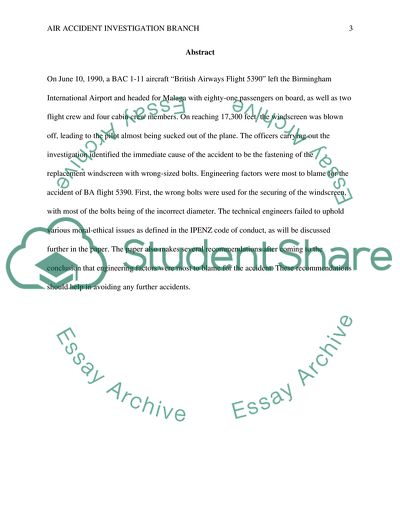Cite this document
(Air Accident Investigation Branch Case Study Example | Topics and Well Written Essays - 2000 words, n.d.)
Air Accident Investigation Branch Case Study Example | Topics and Well Written Essays - 2000 words. https://studentshare.org/engineering-and-construction/1780808-air-accident-investigation-branch
Air Accident Investigation Branch Case Study Example | Topics and Well Written Essays - 2000 words. https://studentshare.org/engineering-and-construction/1780808-air-accident-investigation-branch
(Air Accident Investigation Branch Case Study Example | Topics and Well Written Essays - 2000 Words)
Air Accident Investigation Branch Case Study Example | Topics and Well Written Essays - 2000 Words. https://studentshare.org/engineering-and-construction/1780808-air-accident-investigation-branch.
Air Accident Investigation Branch Case Study Example | Topics and Well Written Essays - 2000 Words. https://studentshare.org/engineering-and-construction/1780808-air-accident-investigation-branch.
“Air Accident Investigation Branch Case Study Example | Topics and Well Written Essays - 2000 Words”. https://studentshare.org/engineering-and-construction/1780808-air-accident-investigation-branch.


